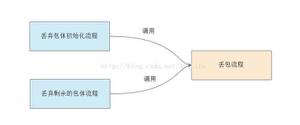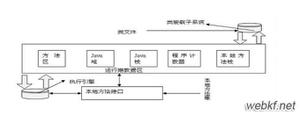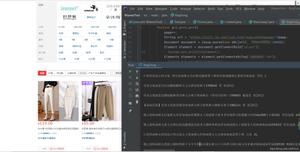Python闭包与装饰器原理及实例解析
一、闭包
闭包相当于函数中,嵌套另一个函数,并返回。代码如下:
def func(name): # 定义外层函数
def inner_func(age): # 内层函数
print('name: ', name, ', age: ', age)
return inner_func # 注意此处要返回,才能体现闭包
bb = func('jayson') # 将字符串传给func函数,返回inner_func并赋值给变量
bb(28) # 通过变量调用func函数,传入参数,从而完成闭包
>>
name: jayson , age: 28
二、装饰器
装饰器:把函数test当成变量传入装饰函数deco --> 执行了装饰操作后,变量传回给了函数test()。比如装饰器效果是test = test-1,test函数经过deco装饰后,调用test其实执行的是 test = test-1。
1、装饰器是利用闭包原理,区别是装饰器在闭包中传入的参数是函数,而不是变量。
注:其实在装饰器中,函数即变量
def deco(func): # 传入func函数。
print('decoration')
return func
def test():
print('test_func')
test = deco(test) # 对函数进行装饰。执行了deco函数,并将返回值赋值给test
>>
# 输出deco的运行结果
decoration
test() # 运行装饰后的函数
>>
test_func
2、以上代码等价于
def deco(func): # 传入func函数。
print('decoration')
return func
@deco # 等价于上一代码中test = deco(test),不过上一代码需放在定义test之后
def test():
print('test_func')
>>
# 输出deco的运行结果
decoration
test() # 运行装饰后的函数
>>
test_func
3、装饰器(简版)
def deco(func): # 装饰函数传入func
print('decoration')
return func
@deco # 装饰函数。
def test():
print('test_func')
# 定义完函数后,会直接执行装饰器deco(test)
>>
decoration
# 调用test,执行test函数
test()
>>
test_func
3、装饰器(升级版)
在上一个版本中,由于在定义装饰器 + 函数时,就会执行装饰函数里面的语句。
为了使其在未被调用时候不执行,需要再嵌套一个函数,将函数进行包裹。
def deco(func):
print('decoration') # 此处未调用func函数时,会直接执行
def wrapper(): # 名称自定义,一般用wrapper
print('execute') # 此处未调用func函数时,不会执行
func() # 执行函数
return wrapper # 此处返回wrapper给func,通过外部func()执行
@deco # 注意:此处不能有括号。有括号的形式是func未传入最外层deco(),传入deco的子函数中
def test():
print('test_func')
>>
decoration
#调用test
test()
>>
execute
test_func
注意:如果func函数本身有返回值,同样需要在包裹函数中返回
def deco(func):
print('decoration')
def wrapper():
print('execute')
a = func() # 执行函数,并返回值
print('done')
return a # 将func的返回值一并返回
return wrapper
@deco
def test():
print('test_func')
return 5 # 增加返回值
>>
decoration
#调用test
test()
>>
execute
test_func
done
# 此处是test函数的返回值
3、装饰器(进阶版)
在包裹函数中,参数形式设置为*arg、**kwarg,会使得函数更加灵活。
当修改test函数参数形式时,不用在装饰器中同时修改。
import time
def deco(func):
def inner(*arg, **kwarg): # 此处传入参数
begin_time = time.time()
time.sleep(2)
a = func(*arg, **kwarg) # 调用函数,使用传入的参数
end_time = time.time()
print('运行时间:', end_time - begin_time)
return a
return inner
@deco
def test(a):
print('test function:', a)
return a
# 调用函数
test(5)
>>
test function: 5
运行时间: 2.0003252029418945
# 5是函数返回的值
4、高阶版
有时候我们会发现有的装饰器带括号,其原因是将上述的装饰器外面又套了一个函数
import time
def outer(): # 在原装饰器外套一层函数,将装饰器封装在函数里面。(outer自定义)
def deco(func): # 原装饰器,后面的代码一样
def inner(*arg, **kwarg):
begin_time = time.time()
time.sleep(2)
a = func(*arg, **kwarg)
end_time = time.time()
print('运行时间:', end_time - begin_time)
return a
return inner
return deco # 注意:此处需返回装饰函数
@outer() # 此处就需要加括号,其实是调用了outer()函数,将test传进其子函数
def test(a):
print('test function:', a)
return a
test(4)
>>
test function: 4
运行时间: 2.000566005706787
# 返回4
5、高阶终结版
带参数的装饰器(装饰器加括号,带参数)
import time
def outer(choose): # 在最外层函数中加入参数
if choose==1: # 通过choose参数,选择装饰器
def deco(func):
def inner(*arg, **kwarg):
print('decoration1')
begin_time = time.time()
time.sleep(2) # 睡眠2s
a = func(*arg, **kwarg)
end_time = time.time()
print('运行时间1:', end_time - begin_time)
return a
return inner
return deco
else:
def deco(func):
def inner(*arg, **kwarg):
print('decoration2')
begin_time = time.time()
time.sleep(5) # 睡眠5s
a = func(*arg, **kwarg)
end_time = time.time()
print('运行时间2:', end_time - begin_time)
return a
return inner
return deco
@outer(1) # 由于outer中有参数,此处必须传入参数
def test1(a):
print('test function1:', a)
return a
@outer(5) # 传入另一个参数
def test2(a):
print('test function2:', a)
return a
# 分别调用2个函数(2个函数装饰器相同,装饰器参数不同)
test1(2) # 调用test1
>>
decoration1
test function1: 2
运行时间1: 2.000072717666626 # 2秒
# test1的返回值
test2(4) # 调用test2
>>
decoration2
test function2: 4
运行时间2: 5.000797986984253 # 5秒
# test2的返回值
以上是 Python闭包与装饰器原理及实例解析 的全部内容, 来源链接: utcz.com/z/323263.html








